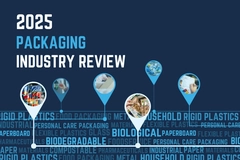South Korean scientists link common chemicals in packaging to metabolic diseases

04 Aug 2022 --- Scientists in South Korea have demonstrated that harmful endocrine-disrupting chemicals (EDCs), including phthalates and bisphenol A (BPA) found in consumer packaging, may damage the mammalian liver and cause metabolic diseases, particularly in mixture forms.
The Chung-Ang University researchers evaluated the impact of toxic EDCs on liver function and metabolic homeostasis. Humans are constantly exposed to these chemicals through consumer products, including plastics, aluminum cans, pharmaceuticals and cosmetics.
In the study, mice exposed to these compounds at permissible human exposure limits suffered minimal effects, but their liver function was greatly affected by higher levels of EDCs due to disruptions in genetic and non-genetic pathways.
The study is deemed important because it evaluates the impact of toxic chemicals in a real-life scenario, which the researchers say is necessary to underscore and define their permissible levels in consumer products.
“Combined EDC exposure may increase overall EDC ingestion, resulting in significant health consequences. Our study tried to change the conventional toxicological approach, and we hope it has an enormous impact on regulatory and public health perspectives,” says Professor Myung-Geol Pang at Chung-Ang University. The process through which EDCs cause metabolic abnormality (Image credit: Chung-Ang University).
The process through which EDCs cause metabolic abnormality (Image credit: Chung-Ang University).
Toxic chemicals and policy
In April, the EU announced that it will ban the use of harmful chemical groups like BPA, PFAS and PVC by 2030. The political commitment, which has not yet been entered into legislation, is expected to drastically diminish human and environmental health damage and save billions of euros in associated costs.
Meanwhile, public groups are petitioning the US Food and Drug Administration (FDA) to restrict BPA in food packaging after new findings suggest the chemical can damage human health at levels 100,000 times lower than previously thought.
BPA-free packaging solutions are on the rise. For example, PPG recently launched PPG Innovel Pro, an enhanced internal spray coating that uses no BPA or “bisphenol starting substances” and provides more robust application properties for aluminum beverage cans. The researchers hope the study has a significant impact on public health perspectives.
The researchers hope the study has a significant impact on public health perspectives.
In December, the FDA was sued by eight environmental and human health organizations for failing to ban phthalate chemicals in F&B packaging, despite years of research proving its danger to human and environmental health.
The impacts of toxic chemicals are not limited to human health. According to recent research by the American Chemical Society, chemical pollution has passed the threshold of a stable environment for the first time in 10,000 years. The study showed that novel entities – that could have large-scale impacts “threatening the integrity of Earth system processes” – are increasing at a pace that outstrips the global capacity for assessment and monitoring.
Liver damage concerns
Since both BPA and phthalates are structurally similar to steroid hormones that regulate chemical signaling in the body, they are capable of manipulating and disrupting hormonal functions. According to the Chung-Ang University researchers, the liver, the seat of energy metabolism and xenobiotic detoxification, is the main target of these EDCs.
The liver converts these EDCs into non-toxic, water-soluble metabolites for excretion via urine. However, this biotransformation process generates reactive intermediates that accumulate in the liver, causing cell death and organ failure.
Studies involving animal models and human urine samples have confirmed the positive correlation between exposure to individual EDCs and abnormal liver function. However, they fail to consider real-life scenarios where uncontrolled multi-chemical exposure occurs simultaneously.  The liver converts EDCs into non-toxic, water-soluble metabolites but this biotransformation can cause organ failure.
The liver converts EDCs into non-toxic, water-soluble metabolites but this biotransformation can cause organ failure.
To address this issue, Pang and his colleagues investigated the effects of the combined exposure to BPA and phthalates on liver function and metabolic homeostasis in mice models. They evaluated the effects of BPA and an EDC mixture consisting of BPA and seven phthalate compounds on male mice, observing that neither BPA alone nor the EDC mixture affected liver function at the permissible human daily exposure (DE) limits defined by the Ministry of Food and Drug Safety in South Korea.
However, significant changes in the liver were observed when the dose of the EDC mixture was increased to 25, 250, and 2500 times the DE limit, including an increase in the overall weight of the liver.
The study recorded lipid, triglyceride, and cholesterol – forms in which fat is stored in the body – buildup in the liver in addition to elevated blood glucose levels with these high levels of EDC exposure. The scientists speculated that the EDCs induced the expression of key genes involved in glucose production and transport pathways, which ultimately impacted liver health.
The study was made available online on May 26, 2022, and will be published on August 15, 2022, in volume 436 of the Journal of Hazardous Materials.
By Joshua Poole











